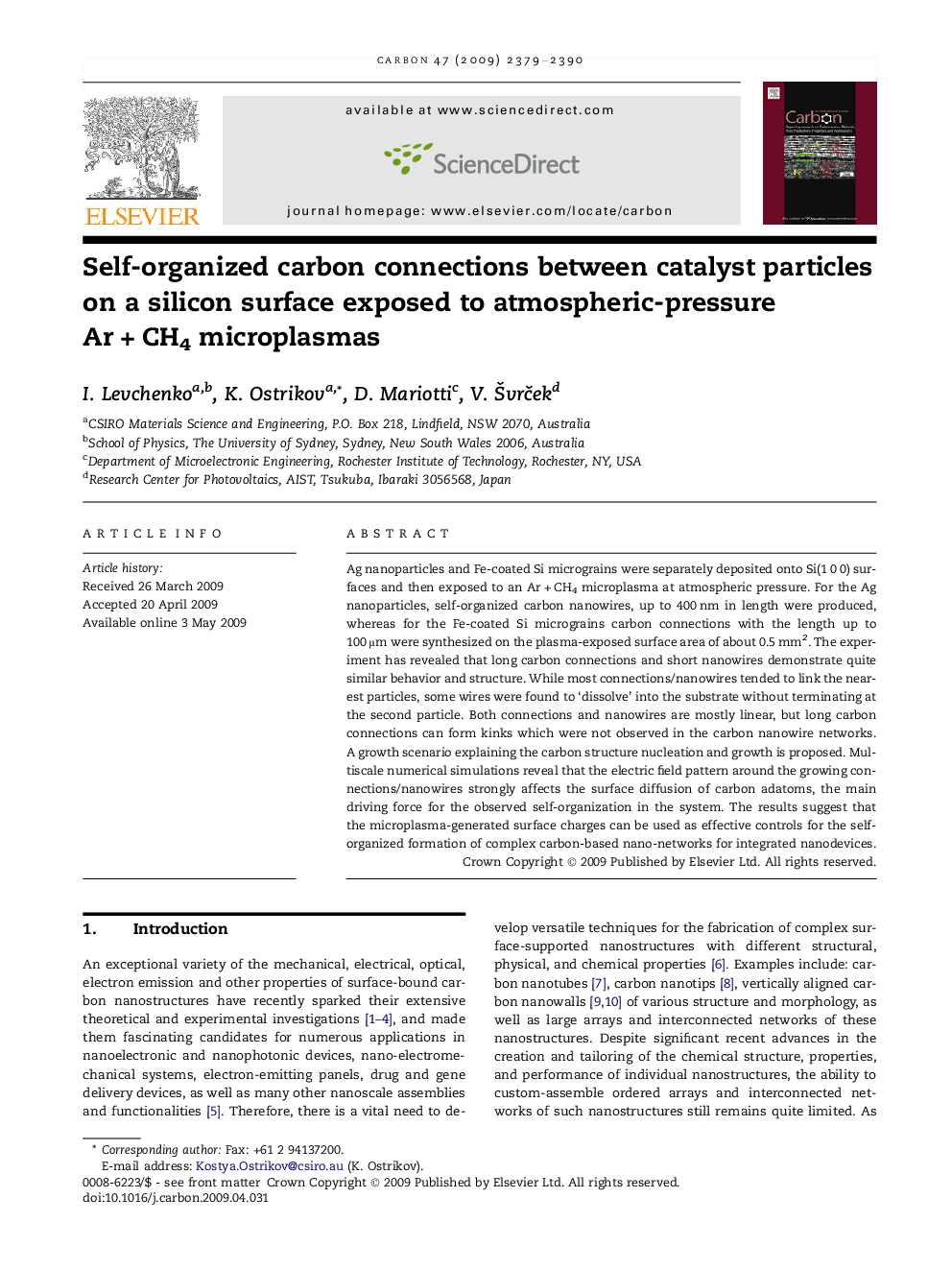| Article ID | Journal | Published Year | Pages | File Type |
|---|---|---|---|---|
| 1416409 | Carbon | 2009 | 12 Pages |
Ag nanoparticles and Fe-coated Si micrograins were separately deposited onto Si(1 0 0) surfaces and then exposed to an Ar + CH4 microplasma at atmospheric pressure. For the Ag nanoparticles, self-organized carbon nanowires, up to 400 nm in length were produced, whereas for the Fe-coated Si micrograins carbon connections with the length up to 100 μm were synthesized on the plasma-exposed surface area of about 0.5 mm2. The experiment has revealed that long carbon connections and short nanowires demonstrate quite similar behavior and structure. While most connections/nanowires tended to link the nearest particles, some wires were found to ‘dissolve’ into the substrate without terminating at the second particle. Both connections and nanowires are mostly linear, but long carbon connections can form kinks which were not observed in the carbon nanowire networks. A growth scenario explaining the carbon structure nucleation and growth is proposed. Multiscale numerical simulations reveal that the electric field pattern around the growing connections/nanowires strongly affects the surface diffusion of carbon adatoms, the main driving force for the observed self-organization in the system. The results suggest that the microplasma-generated surface charges can be used as effective controls for the self-organized formation of complex carbon-based nano-networks for integrated nanodevices.
